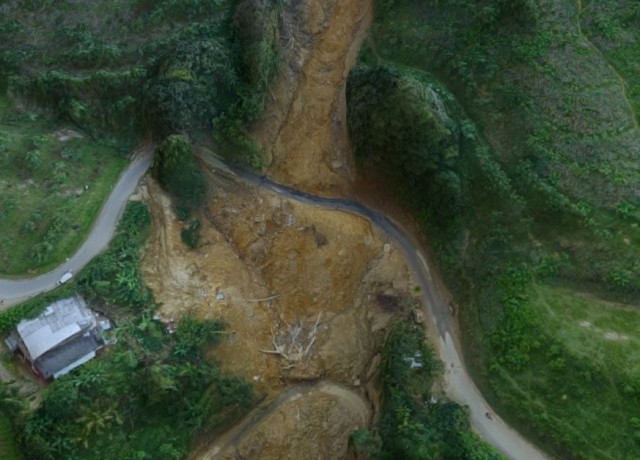14 September 2015
The Rilpola, Badulla landslide in Sri Lanka: a 3D rendering
Posted by Dave Petley
Rilpola, Badulla landslide in Sri Lanka
On 27th December 2014 heavy rainfall in Sri Lanka triggered landslides and floods. In our database we recorded nine landslides that caused loss of life, with a total of 22 deaths. The largest event in terms of loss of life occurred at Rilpola, where eight people were killed. JICA, the Japanese international aid agency, has placed on the Sketchfab website a 3D rendering of a landslide at Rilplola, which I assume is the one that took the eight lives. The 3D rendering is pretty cool, and should be visible below, though this does not seem to work in all browsers. If not it can be accessed here):
Landslide – Rilpola, Badulla, Sri Lanka
by srimalsl
on Sketchfab
.
So a couple of observations about this landslide from the imagery, such as this one of the crown of the landslide:-
.
This seems to be a landslide in heavily weathered soil, and the the upper area is perhaps surprisingly deep. The aspect that I find most interesting is that the point of initiation of the landslide coincides with a track – indeed the rear scarp of the slide seems to be a failure of the oversteepened track wall Looking at the morphology of the land around the landslide scarp would lead me to wonder if this had been showing a little bit of movement before the track was completed. The steep wall of the track, and perhaps dumping of fill on the downslope side to create the bench, appears to have been responsible for the landslide. This my have been compounded by changes to the drainage of water associated with the track as well – note the little gully just to the left of the landslide, and the lack of drainage around the track to manage this.
The landslide dynamics seem to have changed dramatically when it hit the road further down the hill:
.
Here the landslide appears to have spread out and started to go through a deposition phase. I am assuming that this is the area in which the fatalities occurred. It is likely that the landslide would have arrived here as a high velocity, high density flow.
Thus, this 3D rendering of the Rilpola landslide illustrates beautifully the potential harm of road building in these fragile landscapes, a problem that is repeated right across the mountainous parts of South Asia. These landslides are avoidable with even simple engineering on the roads.




 Dave Petley is the Vice-Chancellor of the University of Hull in the United Kingdom. His blog provides commentary and analysis of landslide events occurring worldwide, including the landslides themselves, latest research, and conferences and meetings.
Dave Petley is the Vice-Chancellor of the University of Hull in the United Kingdom. His blog provides commentary and analysis of landslide events occurring worldwide, including the landslides themselves, latest research, and conferences and meetings.